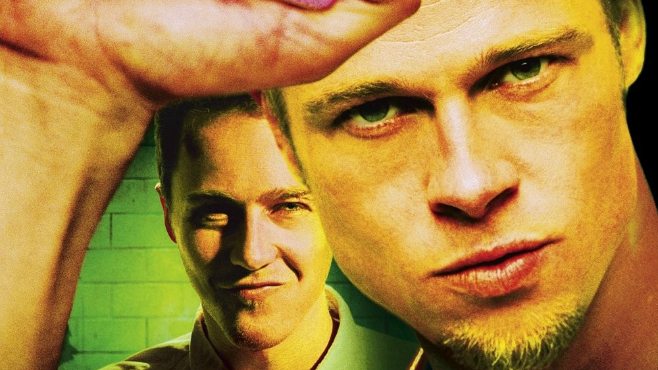Two decades. Long enough a time for even a vastly popular film’s legacy to die down, leave alone its popularity that is anyway measured on a relatively shorter yardstick. ‘Fight Club’ defied that, and not only does its legacy live on in 2019, a mighty two decades since it was first released, so does its popularity. Tyler Durden is still a messiah for nine to fivers toiling away in the hopes of a rebellion, and its numerous quotes that attacked the very core of what the society seemed to function on years ago (and still does) are still gospel for those followers, flooding the internet every once in a while.
We are talking about a film with literal daggers up its sleeve against everything that basically defined the modern world, from consumerism, to culture, social structure, the wants and needs, the corporate circus, the materialism that we so happily let overcome us, the high rises, the ‘success ladder’, validations, finances, debts, and virtually all terms that sound snazzy enough to run the world today. It shunned societal values, debased what the entire ‘system’ seemed to run upon, and sought to spark an internal revolution, calling out to the part of the male psyche that let ‘masculinity’ slip into suits and shirts and ties wavering around in callously planned square offices.
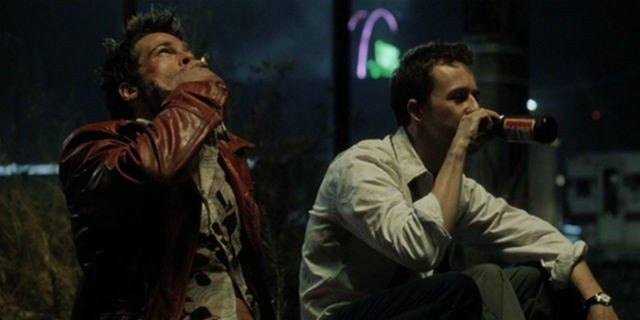
Chuck Palahniuk said everything in his novel that all of us have at some point wondered while meaninglessly writhing away; his writing is still relevant, even more so today, and David Fincher’s little revolution packaged as an explosively twisty film embodies all of that, with a little bit of added mischief and mayhem. The criticisms with irresponsible representations, and the provocatory nature of the film followed closely for years, until an entire generation knew ‘Fight Club’ to be the film that definitively spoke of everything wrong with the modern world, and summatively redefined the word ‘cool’. The only other film that did that three decades before even ‘Fight Club’ was ‘A Clockwork Orange’, sans the cool and twice as harrowing, and needless to say, it was met with criticism along similar lines. However, none of those blots even came close to what people had to say about the ending of the film, twisted as a wretched rubber band that would tension up all the more whence you got done with the first knot. Here, we attempt to tackle that and more.
The Ending, Explained
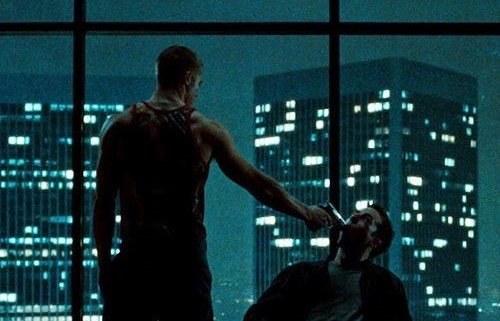
It would be fairly obvious to assume that you’ve had a generous dose of the cult classic by now if you are here, and seriously, if you haven’t, you’re doing yourself and the film community a great disservice. Hear not me who speaks highly of the film beyond reason, but the million others who would parry in my claim. Sermonising aside, as we proceed, we refer to Edward Norton’s deceptive first person in the film as simply ‘The Narrator’ as listed in the official credits as we attempt to decipher his troubled psyche, the idea(s) of Tyler Durden, the ending, that was explosive in the most literal sense, and the significance and themes that run deep as veins in this highly influential film.
I admit that having gone berserk when I first watched the film, and burning the disc for repeated viewings in a state of being completely and helplessly enamoured, a recent, calmer viewing of ‘Fight Club’ put me in a more contemplative state of its various narrative choices, that safe to say, broke more than a few moulds back in the day. Things that appeared colloquially weird the first time around made more sense now and for a keen eye, the various Easter-Eggs and obvious references made the revelation visible from miles away. This is not to take away the impact of the first time that obviously took your breath away, but to state it as an elaborate puzzle that you know how to solve, yet in the process, you have learnt to appreciate how intelligently the pieces fit together.
Who is Tyler Durden?

If I am to put it simply, without mincing any words whatsoever, Tyler Durden is an idea. In psychological terms, he would be stated as the dissociative identity that stemmed from the narrator’s innate dissatisfaction from his mundane material existence and his latent inbound desire to change it. You must have often caught yourself practicing a speech in front of the mirror, holding conferences and talks, delivering sermons, seeing yourself as somebody you have always wanted to be, the mirror being the manifestation of your wish seeking fulfilment. That person in the mirror, that manifestation is who Tyler Durden is. A figment of the narrator’s imagination, an extension of himself, yet embodying everything the narrator wasn’t but aspired to be is the overall summative of Tyler Durden as a person. This piece of dialogue from the film by the man himself should give you an idea as to how and most importantly why the second, more elusive identity developed in the first place, unbeknownst to the narrator.
“All the ways you wish you could be, that’s me. I look like you wanna look, I fuck like you wanna fuck, I am smart, capable, and most importantly, I am free in all the ways that you are not.”
One of the many reasons for Tyler Durden’s almost global appeal that defines him as a case study in triumphant character writing and pretty much the ambassador for cool is that like it did the narrator, Tyler’s carefree self, through his words and actions, is able to tap into a repressed part of our psyche, the same one that holds anguish on the inside and dons a smile on the outside. By extension, it would also mean that the words of Tyler Durden were gospel for us because akin to the narrator, we, the common men today harbour the same kind of dissatisfaction and disillusionment. It was affecting because in a way that almost all of us would denounce, it was relatable.
Easter Eggs
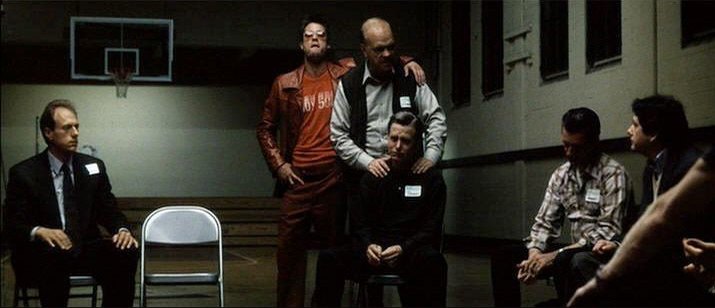
Early on, I talked about having a different kind of experience watching the film again at a distant interval of time since I had first seen it. That would also hold true in terms of how this revelatory twist presents itself to you. You know the revelation, but now you begin to see it coming, pointing all the subtle (and unsubtle hints) Fincher and Palahniuk send your way. There is a host of them, and the very first ones occur in the initial bits of the film during the narrator’s introduction. Funnily enough, in the manner Tyler inconspicuously slipped in lewd pieces of film in the projection reel of the theatre he worked at, Fincher here tries to introduce a little mischief himself for the viewer.
Apart from phalluses and other sexual images that briefly flash in the film at numerous instances, Tyler too appears in extremely brief blink and you miss them flashes, rather as a tease, making the narrator look as bewildered as the audience, reflecting his clearly troubled state of mind.“Nobody knows they saw it, but they did.”Interestingly enough, the narrator sees these flashes before he actually meets Tyler in the plane, furthering the hypothesis that Tyler wasn’t a real person in the first place.
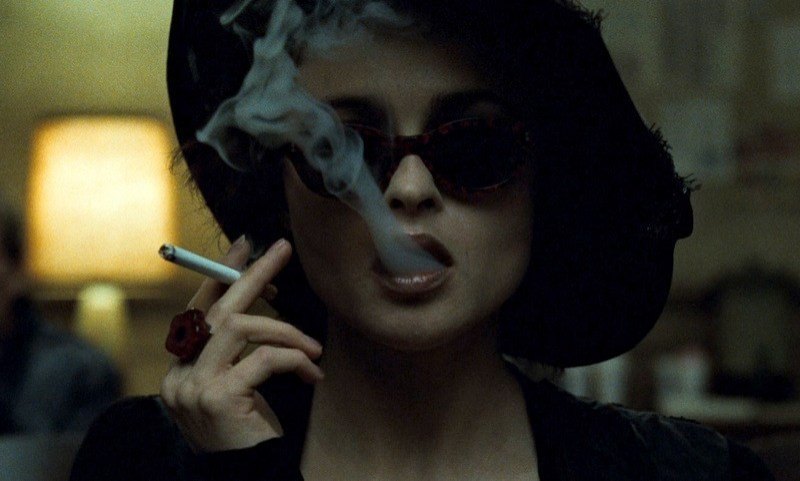
However, as telling as it was, this was only the first one of these instances among many. A rather subtle one that becomes more obvious during subsequent viewings is Marla’s conversations with the narrator, especially the ones following the nights when “Tyler” slept with Marla. “You fuck me, then snub me. You love me, you hate me. You show me your sensitive side, then you turn into a total asshole.” She remarks, at one such instant.This evident duality, coupled with Tyler’s insistence on not talking about him in front of Marla and her continuous “who are you talking to?” retorts for the narrator are only precursors to the conclusion that it was actually the narrator sleeping with Marla, albeit as his dissociative self.

Another famous topic of discussion for the internet has been the car scene. Remember the scene where Tyler is driving the narrator and two other members of project Mayhem, wherein the former two get into a verbal argument and Tyler urges the narrator to let go? This is one of the extremely few scenes where Tyler and the narrator appear together AND indulge in a conversation in front of other people.
However, if you observe closely on a second viewing, knowing the revelatory twist, you will see that the scene is essentially the narrator sermonising as ‘Tyler’, while the voice of the narrator in the film in actuality would be his own voice of reason in his head, the remaining bits the narrator has of himself as Tyler’s dissociative identity takes over. Another scene that took me by complete surprise was after the crash, when Tyler who was driving before the crash emerges from the wreckage on the passenger’s side, and the narrator emerges on the driver’s side. This deliberate intermixing, I believe, is one of the film’s subtle foreshadowings of the dissociative identity revelation.
The Explosive Finale

“In the world I see – you are stalking elk through the damp canyon forests around the ruins of Rockefeller Center. You’ll wear leather clothes that will last you the rest of your life. You’ll climb the wrist-thick kudzu vines that wrap the Sears Tower. And when you look down, you’ll see tiny figures pounding corn, laying strips of venison on the empty car pool lane of some abandoned superhighway.”
Tyler gives a fairly graphic description of the world he wishes to build one day, partly in voiceover. Reading the description, it becomes increasingly obvious that Tyler, the manifestation that he is, would seem like a man for the pre-industrialisation ages: a simpler way of life involving hunting and cultivating farm yield. His description makes sure that the remnants of the modern world, the ones that would survive after he is done with his “mission”, would still be there, albeit as reminders, with thick vines growing around them, implying their abandonment and them having fallen into a derelict state of disrepair, Including the multi lane superhighways that no one would now use because there are no cars to begin with!
The cars, skyscrapers, offices, hotels, fancy homes, the superhighways and the cities in general: it doesn’t take a genius to figure out the common element linking those: money, cash, capital, finance. Tyler’s plan seeks to take down the one institution behind all these institutions, one of finance. Specifically, Tyler’s plan involved blowing up the headquarters of major credit card companies, in an attempt to destroy records of any and all debt. “If we erase the debt record, then we all go back to zero”, the narrator cites on one incident. That is where the end begins, with the narrator realising his dual nature, and trying to stop the attempted attack, he “faces off” against Tyler in the basement of one of these buildings where vans packed with homemade explosives are waiting to be blown up. The narrator diffuses that, but is quickly subdued by Tyler in a hand to hand.
By this point, also evident from the camera footage, we know that it is actually the narrator inflicting those attacks on himself, and the ‘Tyler vs. Narrator’ battle is more internal. That Tyler is easily able to win among the two clearly signifies him being the more dominant personality of the narrator’s dissociative ones, and is slowly taking over. However, even that ending has a kind of dual ambiguity associated with it. Hereon, we discuss that.
What’s That Smell?

Going back to the beginning and following a bout of crazy flashback humour, we see Tyler counting down three minutes to the attempted assault, to ground zero. However, in the final moments of the film, the story takes some really dark turns to deliver one of the most deliciously twisted endings of the 90s. The key to cracking that ending lies in this one line that the narrator mouths as Tyler looks out the window, waiting for the explosives to go off. “That old saying, how you always hurt the one you love, well it works both ways”. Read on.
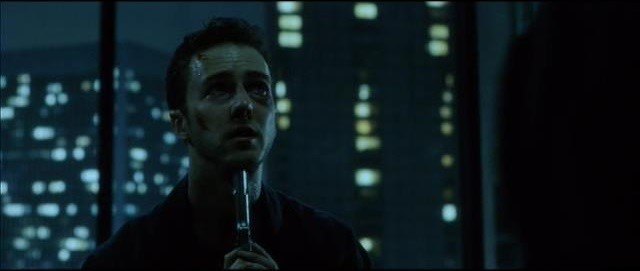
Jumping straight to the point when the narrator seemingly finds a way to overpower his dissociative identity, he realises that Tyler is but a phantasm, and him holding the gun would actually imply that the narrator has it himself. Now, in an attempt to eliminate Tyler, he shoots himself in the mouth with that gun, but to everyone’s surprise, it is Tyler who falls to the ground with a pie sized hole in his head, while the narrator is barely hurt to an extent that he starts talking normally minutes after his vocal cord should have been possibly tethered from the shot, instead only profusely bleeding only from the side of his neck, and in all improbability, surviving. The only possible explanation for this mayhem is that the narrator didn’t actually shoot himself in the back of the head. He pulled the trigger with the gun inside his mouth, aimed at the very spot he was hurt in the end: the side of his neck, only narrowly escaping with his life.
On the narrator’s end, it was a well calculated shot, one that was designed to let him get away with, yet it impaled ‘Tyler’ lethally. This was because since Tyler never was a real person, “killing” him was merely signatory. As whimsical as it may sound, this one act was clearly representative of the narrator taking control and letting go at once, accepting his alter ego, his dissociative identity, and becoming one with it. At this point, the two identities hang in a balance whose scales can freely tip completely in one direction. The film thereby ends with “Tyler” holding hands with Marla, and watching out the window as Project Mayhem is unleashed and a few buildings wired to blow are reduced to rubble. Well, it actually ends with a little phallic mischief from Fincher, but the former sounds better. Let’s leave it at that.
Ground Zero?

The second part of the dual ambiguity. Since the film ends on multiple ambiguous notes, including the very ambiguity of who survives, I wouldn’t be so surprised if the ending, the supposed conclusion to Project Mayhem with the bombs in the basements of the credit card office buildings simultaneously going off, crippling the financial system, wasn’t real to begin with. What if The Narrator emerged victorious in the “face-off”, survived, and hallucinated the entire conclusion, just as he did Tyler, realising this was what he had wanted all along? Or a mere sequence of fantasy from the director? Unfortunately so, there is no clear way to ascertain whether the conclusion to Project Mayhem, the blast intended to level atleast a city a block at a time was even real or not, and is one of the very few endings in cinema that are truly open-ended and open to interpretation if you think long and hard enough. If you don’t intend to, there is always the first theory to side with.
Final Word

Well, do you EVEN need a final word on ‘Fight Club’? The film is legend, a part of popular culture in a way probably no other film from the 90s is. While I offer my two cents on the ending of the film and what it possibly meant, ‘Fight Club’ remains a work of genius with a hint of crazy that doesn’t need any more reverence than it already has. Deserves? Quite possibly, yes. It attacked corporate culture and the ‘modern‘ embrace in a way that is painfully resonant with even the current times, and if the tide of time is any proof, this film and Tyler’s sermons are bound to gain more relevance in the years to come. The very definition of a cult classic, and unequivocally one of my favourite films ever.

